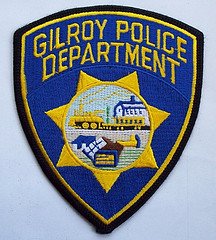The Gilroy Police Department is spending $100,000 to bolster its high-tech arsenal in an effort to gain the upper hand in the ongoing fight against crime.
City Council approved on Monday night the purchase of four new Automated License Plate Reader systems, three designed to be mounted on the roofs of patrol cars and one static ALPR camera. Police anticipate the ever-vigilant ALPR cameras – which constantly take photos of vehicle license plates and compare them to records held in the Department of Justice database – will enable law enforcement to effectively battle criminals who see Gilroy as a prime city for vehicle thefts. GPD’s crime statistics for 2012 show a total of 232 cars were stolen; an increase of 63 from 2011’s total of 169. The $100,000 to purchase the cameras – funding originally approved by Council in 2012 – will come from the City’s general fund.
The system – which consists of four cameras on each car, two facing forward and two facing backward – can be mounted directly onto the roof of patrol cars or incorporated into the light bar. It functions in all conditions and can still take clear snapshots of license plates on cars traveling at speeds of up to 160 mph, according to the PIPS Technology website.
A processor and a back-end server analyze the data received from the cameras, which, according to PIPS Technology, are constantly searching their field of vision for license plates. The science behind the technology allows ALPR cameras to take a color and infrared image of the vehicle and plate. The camera then uses the reflective nature of license plates to separate them from the rest of the image. Using optical character recognition software, the system converts the JPEG image of the license plate into a text file, which then pops up on the computer screen inside the police patrol car. There is no limit to the amount of photos the cameras can take in a day.
“We really feel this will help Gilroy get a handle on its auto theft problem,” Chief Turner said.
Getting a handle on auto theft in Gilroy may be the aim, but one crime-busting ability of the ALPR camera blurs the line between public safety and civil liberty, according to the American Civil Liberties Union.
Officers can input any license plate into the system and find out where that car has been, providing an ALPR camera has photographed it previously, GPD Sgt. Pedro Espinoza explained.
“It’s pretty advanced stuff,” he added.
Whether Gilroyans will be happy about having their cars photographed 24/7 remains to be seen, but GPD officers are impressed with the technology at their disposal.
“I can drive down the main street and it will capture every license plate,” GPD Cpt. Jim Gillio noted.
The system then searches for a hit on the DOJ’s database after the image is captured.
For example: If a license plate is registered as stolen; involved in a felony crime; connected to an AMBER alert (a child abduction alert system started in 1996) or otherwise being looked for by law enforcement; an almost instantaneous alert is delivered to a computer screen inside the officer’s car.
Prior to the installation of GPD’s two present ALPR camera systems, police had to rely on a hunch if they saw a vehicle they thought looked suspicious.
“Officers would have to manually call in the plate,” explained Sgt. Espinoza, who said the efficiency is like night and day.
“You can’t compare the speed,” he said.
The DMV shares the information with the DOJ about felony plates as soon as it gets a notification from law enforcement agencies. Once a plate lands in the DOJ database and a sighting is made on the streets by the ALPR cameras on the patrol car, the officer is given a green light to take whatever action he or she deems warranted for that particular situation.
“GPD then has probable cause to make a traffic stop,” Sgt. Espinoza said.
However, the system doesn’t reveal to officers if a person behind the wheel is a criminal, that is, “unless there is a subject hit attached to the plate,” Espinoza added.
The two ALPR systems currently fixed to GPD patrol cars were funded by a grant from the Association of Bay Area Governments in 2012.
But this time, it’s not just rooftop cameras that Gilroyans will be under the watchful eye of. GPD is also getting a static trailer to snap pictures of license plates. This will help catch perpetrators in the act of stealing or abandoning a car, Turner said.
GPD won’t point to any specific part of the city as being the epicenter of all car-related crime, but Sgt. Espinoza does knows a few areas that will soon be under the unblinking glare of the ALPR static trailer.
This includes “anywhere there are more people,” such as “most of the apartment complexes,” according to Espinoza.
The rationale is tried and tested, he explained, as it’s common for criminals to use urban camouflage afforded by a high-density area. This allows suspects to blend into their surroundings just prior to, or after committing a crime.















